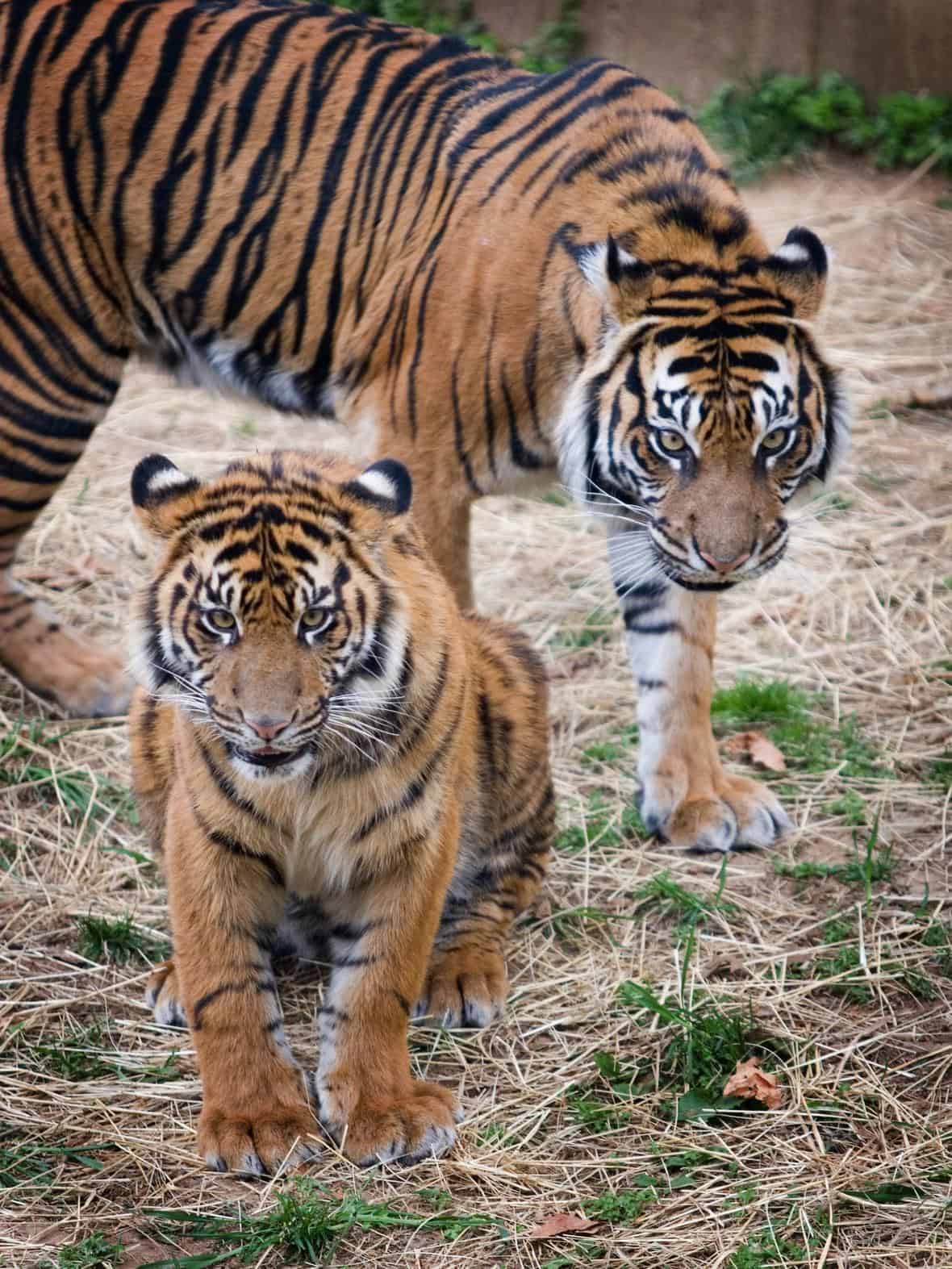A new assessment by the International Union for Conservation of Nature (IUCN) estimates that there are between 3,726 and 5,578 tigers (Panthera tigris) in the wild worldwide [1]. This is an increase of about 40% over previous estimates which were last done in 2015.
While the increase in the estimated global population of tigers is good news for this endangered wild cat, the tiger still remains on the ICUN’s Red List of Threatened Species.
The tiger is the largest of all wild cats with a historical range that once spread throughout central, eastern and southern Asia. Habitat fragmentation, poaching, pollutions, and the conversion of natural areas to agriculture are some of the reasons that have led to a huge decline in wild tiger populations.

Over the past 100 years, the population of tigers has declined from the about 100,000 tigers that lived in the early 1900s. More than 93 percent of the tiger’s historic range has been lost, and today, only fragmented populations remain in 13 nations, from India to Southeast Asia, as well as in Sumatra, China, and the Russian Far East.
Tigers are considered a keystone species that reflects the health of the ecosystems that they inhabit.
Through conservation efforts and better monitoring, the new population estimates of tigers reflect a stable or increasing population. There are now more tigers alive today that there were in 2010.[tigers alive]
Anti-poaching measurements, connecting fragmented habitats through wildlife corridors, protecting existing tiger habitat, and working in consultation with local communities are some of the strategies that conservationists are using to stabilize and enhance tiger populations.
Training staff in patrolling and monitoring as well as setting up thousands of camera traps has helped conservationists to better survey existing tiger populations.
References
[1] Migratory monarch butterfly now endangered – IUCN red list. (2022, July 21). IUCN. https://www.iucn.org/press-release/202207/migratory-monarch-butterfly-now-endangered-iucn-red-list
WCS statement on 40 percent increase of tiger numbers. (2022, July 22). WCS Newsroom. https://newsroom.wcs.org/News-Releases/articleType/ArticleView/articleId/17839/WCS-Statement-on-40-Percent-Increase-of-Tiger-Numbers.aspx







